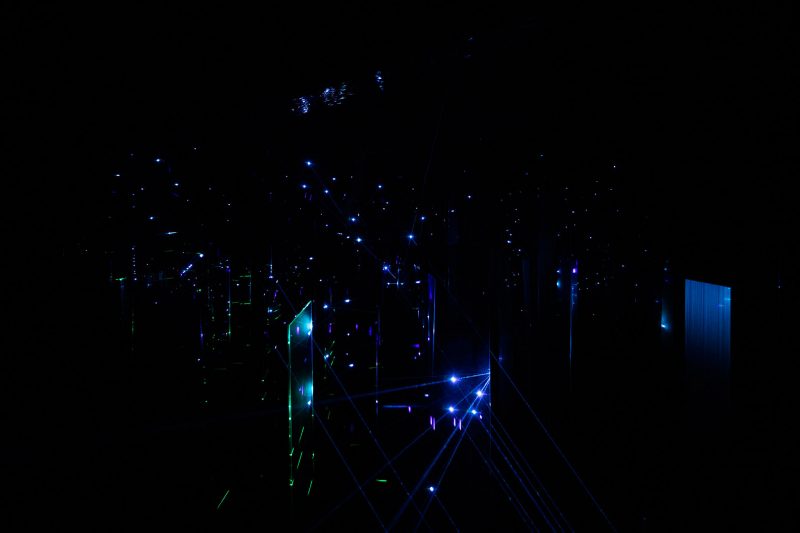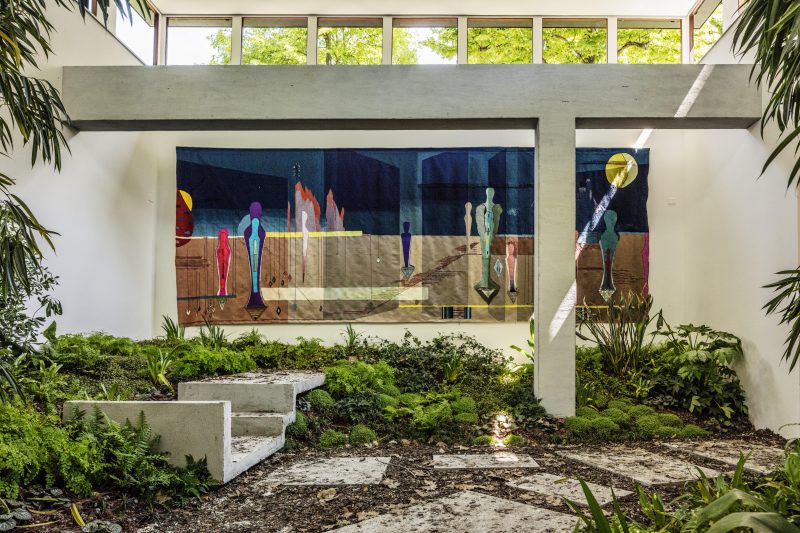One of the most surprising and critically divisive works in the 2017 Venice Biennale was Kirstine Roepstorff’s project Influenza for the Danish Pavilion. Primarily known for her collage-based approach, Roepstorff made a significant artistic departure with Influenza. The first and main part of the work required the audience to submit to a fifteen-minute-long “theater of glowing darkness,” an abstract panoply of voices and dim specters of illumination emerging through the pitch blackness. Afterward, the audience was released into the outdoor garden surrounding the pavilion, where the artist had planted lemon trees, fans, lilies, tobacco plants, roses, elephant ears, ivy, sage, thyme, chamomile, and dots-in-the-air. The third part consisted of an abstract tapestry hung from an exposed wall in the garden, and the fourth part, the most hidden of all, was an invisible force of collaboration woven into the project.
On a sunny afternoon in late September, I sat in the garden with Roepstorff to discuss the origins of Influenza.
—Travis Jeppesen

Influenza
TRAVIS JEPPESEN: Some people might consider Influenza to be three separate works.
KIRSTINE ROEPSTORFF: To me, it’s really one piece, but in sections. I like to see the whole setting as sort of a mind-set. A way to negotiate with our mind and our consciousness. When I started, the first word I got for this show, before I knew anything at all, was influenza. And I was like, huh? What is this “influenza” about?
TJ: It just popped into your mind.
KR: Very visually! Big capital letters in front of my eyes. A few weeks before I got the invitation for Venice. It’s a very interesting word. Beautiful, when you read it. It’s harsh, sticky, nasty, but very dynamic in a weird way. So when I received the invitation, it popped up more often, and in conjunction with Venice, so I somehow knew they had something to do with each other.
But I was trying to understand what this “influenza” is about. I quite soon realized it’s not a physical influenza; it’s a buried weakness that has less to do with the individual and more with the group—the collective—society. At first, I thought it had to do with too much light… Is there too much sun here for you?
TJ: I can turn away. Turn away from the light—like visitors do when they enter your pavilion!

KR: Well, I thought it was interesting because we do live in a very light-exposed society. We want to be in the light; we see the light. It’s dynamic; it’s growth. With all this social media and self-exposure, we put ourselves into the light in order to be seen...
You have reached your article limit
Sign up for a digital subscription and continue reading all new issues, plus our entire archives, for just $1.50/month.
Already a subscriber? Sign in




